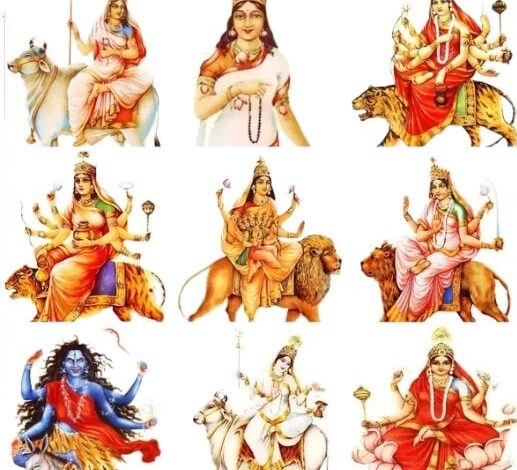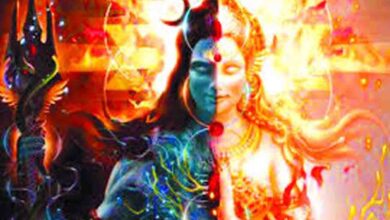GUEST COLUMN : From innocence to wisdom: The nine stages of womanhood

 Manisha Dhami
Manisha Dhami
Sharadiya Navratri may have concluded a few days ago but its deeper significance is timeless. The journey of a woman’s life can be beautifully mirrored in the nine forms of Goddess Durga, collectively known as Navdurga. Each of these divine forms represents a unique stage of growth, strength and wisdom, closely aligned with the different phases of a woman’s life. As stated in Indian philosophy, “Yatra naaryastu pujyante ramante tatra devata,” meaning, “Where women are honored, there the gods are pleased.” This highlights the sacredness and respect that should accompany a woman’s journey. From the first breath of infancy to the wisdom of old age, the Navdurga reflects how a woman evolves. We witness not only her physical development but also the emotional, social and cognitive growth that define her experiences, challenges and triumphs.
The journey begins with Shailaputri, the daughter of the mountains, representing the purity and potential of infancy. Just as Shailaputri stands tall and unshaken by the world around her, an infant girl embodies innocence and trust, nestled in the arms of her parents as she takes on the role of a daughter. This is where life begins—where the seeds of attachment, security and exploration are planted, laying a strong foundation for the future. As the infant grows into a child, she enters the phase of Brahmacharini, the goddess of learning and devotion. Childhood is a time of curiosity, where the mind opens like a blossoming flower, eager to absorb the world’s knowledge. Like Brahmacharini, who walks the path of devotion and learning without weapons, young girls immerse themselves in education and friendships, gradually forming their first ideas about the world. This is the stage of wonder and exploration, where a child builds her sense of self through interactions with family and friends.
As the poet Rumi once said, “The wound is the place where the Light enters you,” signifying that the struggles of adolescence can lead to profound personal growth. With adolescence comes the challenges of self-discovery, marked by the energy of Chandraghanta, the goddess who symbolises courage and inner strength. The teenage years are full of emotional turbulence, identity formation, and a quest for independence. Like Chandraghanta, who balances inner turmoil with external strength, young women must navigate both their own emotional worlds and the societal pressures they face. Adolescence is a time of heightened emotions and uncertainty, where the heart and mind wrestle with clarity and confusion. As adolescence blossoms into early adulthood, women begin to channel the creative energy of Kushmanda, the goddess of creation. This phase is filled with opportunities—education, career choices, relationships, and, for many, the creation of families. MK Gandhi’s words, “You must be the change you wish to see in the world,” remind young women to take charge of their destinies. Like Kushmanda, who created the universe from her cosmic egg, women in this phase nurture their personal goals, relationships and responsibilities. It is a time of immense growth, as they build homes, careers, or families, contributing not only to their own futures but also to their communities.
In adulthood, a woman transitions into the nurturing role of Skandamata, the mother goddess. This phase is marked by motherhood and caregiving, where women shape the future by raising their children and guiding them with love and wisdom. Like Skandamata cradling her child, women in this stage not only nurture others but also deepen their understanding of themselves, navigating the emotional, social and mental demands that caregiving brings. As women enter middle adulthood, they embody the fierce energy of Katyayani, the warrior goddess, symbolising strength and resilience. This phase often requires balancing multiple roles—career, family and societal expectations. Like Katyayani, who defeated the demon Mahishasura, women face internal and external battles, overcoming self-doubt and societal norms. Middle adulthood is often marked by the challenges of caring for aging parents, dealing with the “empty nest” as children leave home, and adjusting to new roles. This phase demands both courage and determination, as women continue to redefine their sense of purpose and balance.
Eventually, a woman enters the transformative stage of Kaalratri, a phase of reflection and transition. As Lord Krishna states in the Gita, “Change is the law of the universe,” urging acceptance of life’s transformations. Kaalratri, the fierce form of the goddess, represents the shedding of old ways, making room for renewal and wisdom. For women, this stage often coincides with menopause, a significant life change that brings new perspectives and opportunities. Just as Kaalratri clears the path for something new, women in this phase embrace change, letting go of previous roles to explore new passions and purposes.
After the trials and transitions, a woman gracefully steps into the final stages of life, embodying the purity and peace of Mahagauri. With a lifetime of experiences behind her, she radiates wisdom and serenity, having embraced all the lessons learned along the way. In this phase, she becomes a beacon of hope for younger generations, guiding them with her insights and nurturing their growth. Her presence inspires those around her to seek inner peace and understanding, making her a true embodiment of maternal grace.
As this journey unfolds, she ultimately embraces her role as Siddhidatri, the goddess of fulfillment and accomplishment. This stage transcends mere existence; it is about legacy and the powerful impact she leaves behind. Like Siddhidatri, who grants wisdom and clarity to her devotees, an elder woman becomes a matriarch, sharing her wealth of knowledge, experiences, and love with those who follow. Through her life’s work, she fosters resilience and hope in the hearts of future generations, ensuring her legacy thrives in their endeavours.
In the grand journey of life, every phase offers its own beauty and lessons. It is essential to embrace each stage with grace and joy. While the future may seem uncertain, it is important not to endure today’s hardships merely in anticipation of tomorrow’s peace. Each stage deserves to be lived fully, as time is ever-changing and never constant. The moments that pass cannot be recreated, and each experience is unique. This is the profound connection between time and growth—especially in the life of a woman. As she evolves, society evolves with her. The roles she plays are not just part of her personal journey but also a reflection of the greater world. Life is not about rushing through challenges but about savoring every phase, knowing that each fleeting moment contributes to the powerful, resilient woman she becomes.
(The author is an assistant professor, department of human development and family studies in MS University of Baroda. Views expressed are personal)






